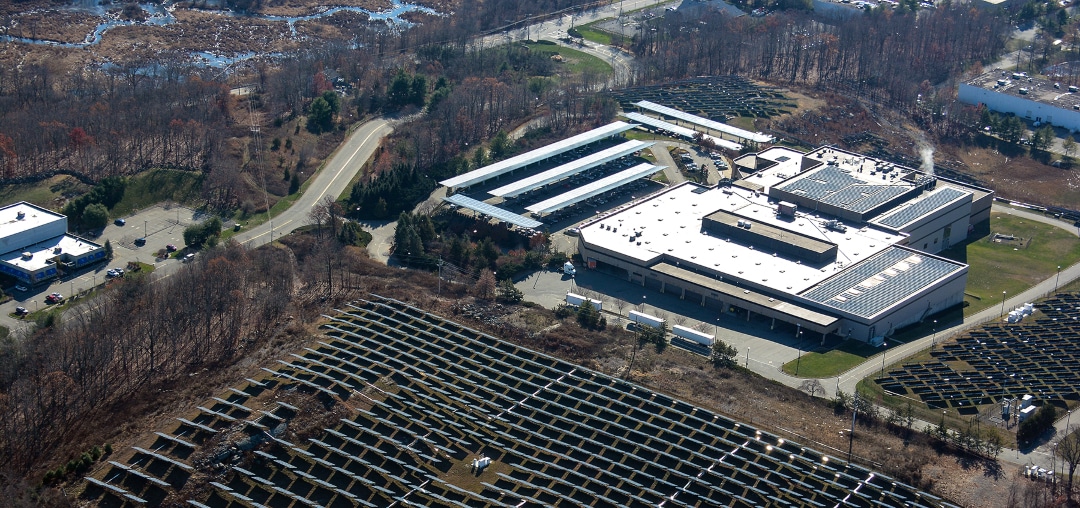The Invesco Solar ETF, a fund that tracks solar stocks, has outperformed the broader market in recent years as investors flocked to companies propelled by falling equipment prices, exploding valuations in the technology sector, policies aimed at reducing carbon emissions and, recently, surging interest in ESG issues. Then the calendar turned to March. With equity markets roiled by the economic fallout from the coronavirus pandemic and an oil price war, losses suffered by the Invesco Solar ETF and other clean-energy funds outpaced the S&P 500’s 12.5% decline last month. Analysts say renewables still enjoy long-term tailwinds and that the sector is poised to rebound strongly. But the industry that emerges from the current crisis is likely to look different than it did before. Source: SP Global
New Jersey is ending the state’s Solar Renewable Energy Certificate (SREC) Registration Program on April 30th, after the state’s utility regulators declared that 5.1% of the retail electricity sold in the state is generated from solar power. That 5.1% benchmark has been set to be the shutdown point since May 2018, when Gov. Phil Murphy signed into law the Clean Energy Act. BPU is replacing the SREC program in two phases, the first of which has been in operation since December and named the Transition Incentive Program and which involves issuing Transition Renewable Energy Certificates (TRECs). The second phase, referred to as the Successor Program, is currently under development. Source: New Jersey Business Magazine
Power system challenges of islands and isolated systems with high shares of variable renewables: The deployment of renewable energy, particularly variable renewables such as wind and solar PV, is expected to increase dramatically across Europe in the coming years. The EU institutions have set a target for renewable energy sources consumption of 32% by 2030. To fulfill these aspirations, most power systems will have to deal with operational limitations that prevent large amounts of non-synchronous generation from being integrated into the energy mix at any given time. Island systems [3] are interesting case studies, as they are the first to experience the challenges associated with high shares of non-synchronous generation. Source: European Association for Storage of Energy (EASE)
AIP finances 604 MWdc of solar: 604 MWdc of solar have been financed via an agreement between Longroad Energy and AIP. Little Bear Solar, comprising four separate projects totaling 215 MWdc in Fresno County, CA and the 379 MWdc project in Andrews County, TX are being financed by two Danish pension funds, PKA and PenSam, represented by their investment manager AIP. The two funds are investing in 50% of the equity interests of both projects. Both projects already have power contracts in place, as Little Bear will be selling energy and RECs to Marin Clean Energy under a 20-year PPA and the Texas project, Prospero I, has an energy-only PPA with Shell Energy North America. Source: Longroad Energy
SolarReviews preaches caution with Tesla solar rental program: When Tesla first launched the company’s solar panel rental program, the program came with the known, upfront, cost of $1,500 to remove solar panels if the homeowner chose to end their subscription. Now, the website states “If you want your system removed, Tesla will provide you with a competitive quote.” Following this change, SolarReviews is warning consumers not to sign the contract in its current state, due to concerns over uncapped monthly subscription fees with uncapped removal fees. Source: SolarReviews
This content is protected by copyright and may not be reused. If you want to cooperate with us and would like to reuse some of our content, please contact: editors@pv-magazine.com.









By submitting this form you agree to pv magazine using your data for the purposes of publishing your comment.
Your personal data will only be disclosed or otherwise transmitted to third parties for the purposes of spam filtering or if this is necessary for technical maintenance of the website. Any other transfer to third parties will not take place unless this is justified on the basis of applicable data protection regulations or if pv magazine is legally obliged to do so.
You may revoke this consent at any time with effect for the future, in which case your personal data will be deleted immediately. Otherwise, your data will be deleted if pv magazine has processed your request or the purpose of data storage is fulfilled.
Further information on data privacy can be found in our Data Protection Policy.